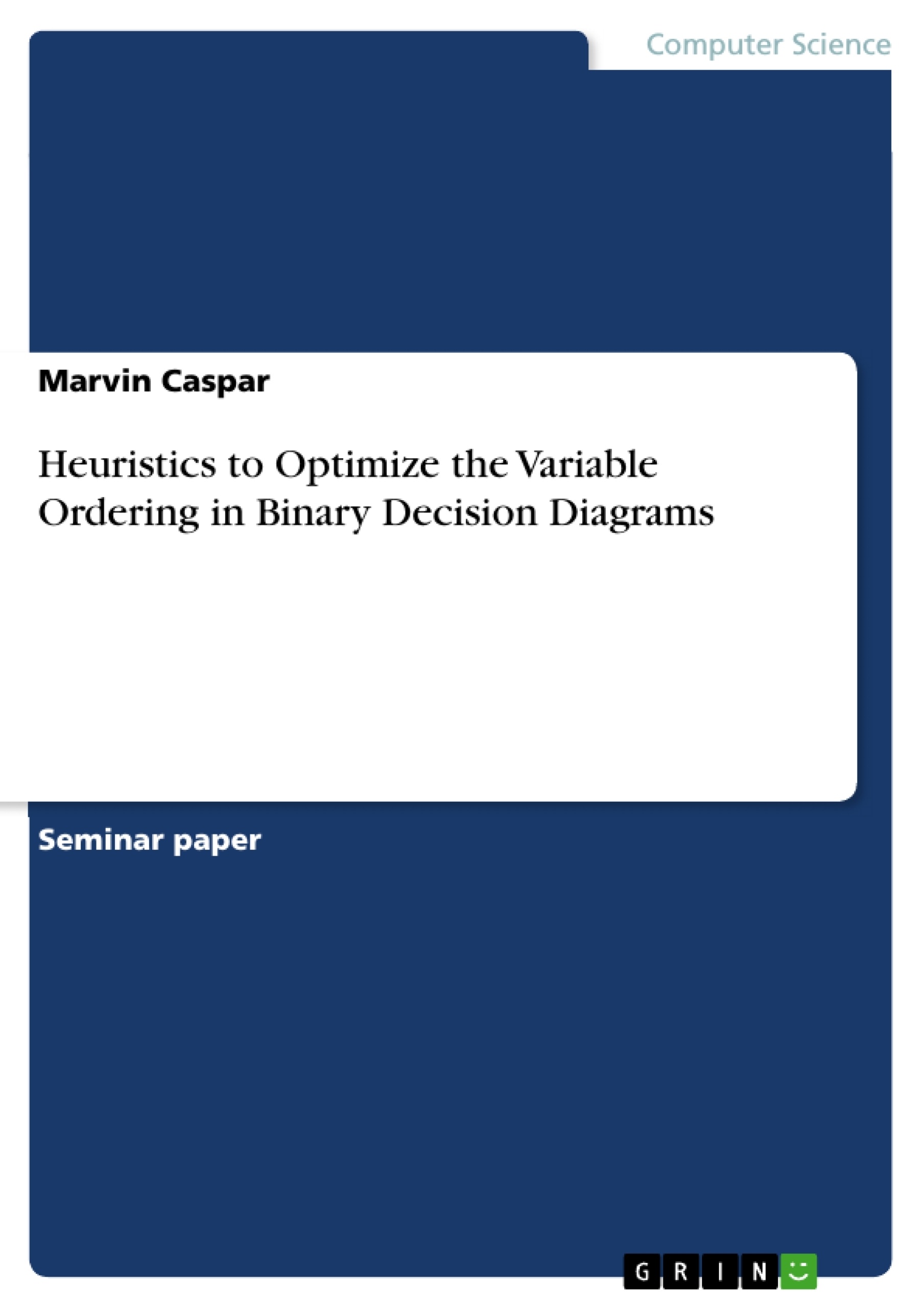In this paper, two fault trees are examined, for which five heuristics are applied to evaluate and compare their effectiveness.
The arrangement of variables in a Binary Decision Diagram (BDD) determines the size of the BDD after applying reduction rules
and thus plays a decisive role in finding a compact representation of the Boolean function. Since there are already many possible arrangements with only a few variables and techniques for finding the optimal solution requiring too much time, the use of heuristics is needed. The main focus is on known approaches and especially on the dynamic method of the sifting algorithm.
Inhaltsverzeichnis (Table of Contents)
- Introduction
- Fundamentals
- Fault Trees Analysis (FTA)
- Heuristics for variable ordering
- Heuristic H1: Depth-First Left-Most
- Heuristic H2: Weighted Depth-First Left-Most
- Heuristic H3: Repeated-Event-Priority Depth-First Left-Most
- Heuristic H4: Fanout Gate Depth-First Left-Most
- Heuristic H5: Sifting
Zielsetzung und Themenschwerpunkte (Objectives and Key Themes)
This paper examines the use of heuristics to optimize variable ordering in Binary Decision Diagrams (BDDs), which are a compact way of representing Boolean functions. The primary objective is to analyze the effectiveness of different heuristics in finding good variable orders for reducing the size of BDDs, thereby optimizing the representation of complex Boolean functions.
- Variable ordering in Binary Decision Diagrams (BDDs)
- Heuristics for finding efficient variable orders
- Comparison of different heuristic approaches
- Application of heuristics in fault tree analysis
- Optimization of BDD size for efficient representation of Boolean functions
Zusammenfassung der Kapitel (Chapter Summaries)
The first chapter introduces the concept of Binary Decision Diagrams (BDDs) and their application in fault tree analysis. It discusses the significance of variable ordering in determining the size of a BDD and the challenges of finding optimal solutions. The chapter further highlights the need for heuristics due to the computational complexity of finding optimal solutions.
Chapter 2 delves into the fundamentals of Fault Tree Analysis (FTA) and defines key terms like Boolean functions and Ordered Binary Decision Diagrams (OBDDs). It explains the concepts of reduction rules and Reduced Ordered Binary Decision Diagrams (ROBDDs) to achieve a compact representation of Boolean functions. The chapter also discusses the importance of reducing the size of BDDs for efficient memory usage.
Schlüsselwörter (Keywords)
The primary keywords of this paper are Binary Decision Diagram (BDD), variable ordering, heuristic, fault tree, and sifting. These terms represent the key concepts and areas of focus, encompassing both the theoretical foundations and practical applications of the work. The research delves into the use of various heuristics, including the sifting algorithm, for finding efficient variable orders in BDDs, particularly within the context of fault tree analysis.
- Arbeit zitieren
- Marvin Caspar (Autor:in), 2019, Heuristics to Optimize the Variable Ordering in Binary Decision Diagrams, München, GRIN Verlag, https://www.hausarbeiten.de/document/1064133


